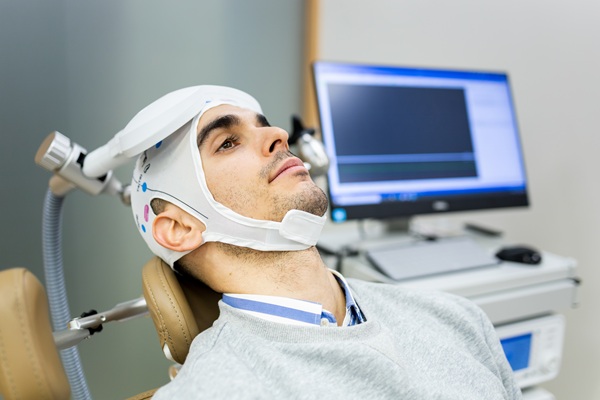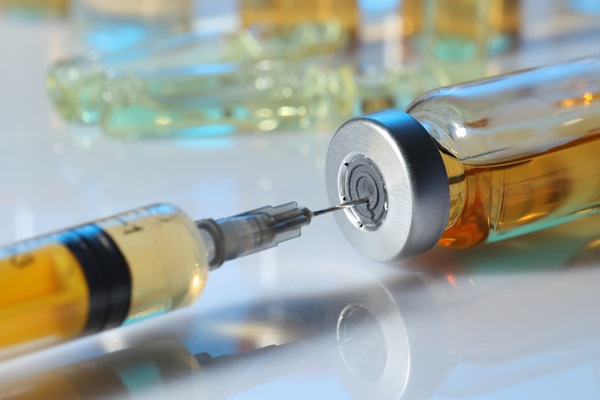Transcranial Magnetic Stimulation (TMS)- The Technology to End Depression
 Depression is real. It is a crushing problem for millions of people in the United states and across the world. It is an all-encompassing burden that many people carry, often in silence. Like many things, depression occurs on a spectrum. It can range to mild symptoms to severe enough that people cannot get out of bed. Many times, people may feel like the only way out is to end their own lives. I have treated thousands of patients with Major Depressive Disorder over my career. I have learned that depression is not just a physical and mental disease, it is also a spiritual attack on an individual. Depression is a tool of the enemy to destroy families, careers, and the individual if left unchecked.
Depression is real. It is a crushing problem for millions of people in the United states and across the world. It is an all-encompassing burden that many people carry, often in silence. Like many things, depression occurs on a spectrum. It can range to mild symptoms to severe enough that people cannot get out of bed. Many times, people may feel like the only way out is to end their own lives. I have treated thousands of patients with Major Depressive Disorder over my career. I have learned that depression is not just a physical and mental disease, it is also a spiritual attack on an individual. Depression is a tool of the enemy to destroy families, careers, and the individual if left unchecked.
Depression can be devastating but it also can be treated. Talk therapy (psychotherapy) is the foundation of treatment. Therapy may help someone identify their negative thinking habits and learn new ways to reduce or change those negative thoughts. Spiritual counseling can be helpful as well but often is not enough to help severe depression. Antidepressant medications are routinely the next step to add to the treatment regimen if talk therapies are ineffective.
Despite the dozens of medications available and the research proven therapy techniques to treat it, many people do not improve with treatment. In fact, approximately two thirds of people with depression do not get adequate relief from the first antidepressant they try. We also know that each subsequent antidepressant trial actually is less likely to help relieve depression symptoms. Patients who have failed 2 antidepressants are typically classified as “Treatment Resistant Depression (TRD).” One third of all patients with clinical depression will not respond to treatment at all or only partially get better. This can be very demoralizing and ultimately make an individual feel like they are out of options.
So, what can someone do when they have tried “everything?”
For decades electroconvulsive therapy (ECT or shock therapy) was the best treatment option for people with treatment resistant depression. ECT is still considered an effective treatment, but many people cannot tolerate the procedure due to the side effects of memory loss, and impairment of cognition. Additionally, stigma is a barrier for many people who may need the treatment. Millions of people with depression end up left with the options of ineffective medications, or shock therapy that may lead to memory loss. For those people who have had an inadequate response to medications and therapy alone, there is an innovative treatment option that is finally getting the attention it deserves. Transcranial Magnetic Stimulation (TMS) can treat depression with magnetic fields. That may be hard to believe but the technology is available today and is covered by most insurances. Unfortunately, most people have not heard of TMS but it is one of the most powerful tools that a psychiatrist could wield against depression.
So, what is Transcranial Magnetic Stimulation or TMS?
First, TMS is one of the best things since sliced bread. It is an FDA approved, noninvasive form of brain stimulation. The device looks a lot like a dentist chair. It works by generating rapidly alternating magnetic fields that can safely stimulate the brain from outside of the head. These magnetic fields target a part of the brain that we know is responsible for regulating mood. Unlike ECT, TMS does not require anesthesia, does not provoke a seizure, nor does it cause memory loss and cognitive problems. The side effects are few, but the most common problems are headache and discomfort at the treatment location. An exceedingly rare side effect is seizure, and TMS may not be appropriate for people with uncontrolled seizure disorders or other serious brain diseases. TMS also is not a good option for individuals with hallucinations or other mental illnesses that cause psychosis.
So, does TMS work?
Resoundingly yes! In fact, it works so well that I have changed my entire practice to make TMS the primary treatment option for our depressed patients. I have routinely seen patients with decades of depression find relief with TMS technology. Many research studies on TMS show the response to TMS is as high as 70-75 percent in people with depression who have failed to receive benefit from medications. This is an exceptionally high response rate. In comparison, we know that after failing 3 antidepressants the chances of responding to a 4th antidepressant is less than 7 percent. Depression will be completely gone for 40-50 percent of people who do the treatment. After completing the treatment, most patients will retain their results, but the results may not be permanent. The average patient will be depression free for a little over a year. If symptoms recur, retreatment has been shown to be effective. Eighty percent of patients that go through TMS a second time respond to the treatment again. For individuals with TRD who do not respond to TMS, other options include: an FDA approved nasal spray called Spravato (Esketamine), intravenous ketamine, or ECT can be reconsidered.
What is it Like to do TMS?
The TMS treatment course involves 36 treatments over 9 weeks. The first treatment is about 60 minutes. This is where the provider maps the brain and determines the treatment location and treatment intensity. The physician will then observe your first treatment to make sure the patient can tolerate the treatment. All the other treatments last under 20 minutes per day. During the treatment, the TMS machine pulses rapidly for 4 seconds then rests for 12-16 seconds. This cycle is repeated for a total of 3000 pulses per treatment. Patients may experience some scalp discomfort initially, but this usually resolves as the treatment progresses. Most patients start to see results after 15-20 treatments but some may feel better as early as 2 weeks into the procedure.
Does Insurance Pay for the treatment?
The FDA approved TMS for the treatment of major depressive disorder after the failure of one antidepressant in adults. Most private insurance companies and federal insurance (Medicare, Tricare) pay for TMS for individuals 18 and older. Insurance companies typically require a failure of at least 3 antidepressants, but each individual policy differs.
A Journey from Depression to Freedom.
TMS is a wonderful blessing for patients who may be losing hope of ever obtaining relief from depression. It is not a magic bullet or cure-all, however. Patients will still need to work on themselves in counseling, improve their diet, exercise, and commit to growing spiritually to get the best results. TMS has proven itself over and over again in our practice. If you or someone you know are suffering with depression, consider seeing a psychiatrist or your primary care doctor and ask to be referred to a TMS provider. If you would like to learn more you can find your nearest TMS provider at greenbrooktms.com, futurepsychsolutions.com, or neurostar.com.
Don A. DuBose M.D., M.S.
Dr. DuBose is an interventional psychiatrist whose mission is to offer more treatment options to find more solutions for depression. Dr. DuBose is a physician but this article is not direct medical advice. This article is for educational purposes and is not a substitute for medical advice. You should consult with your physician before you rely on this information.

